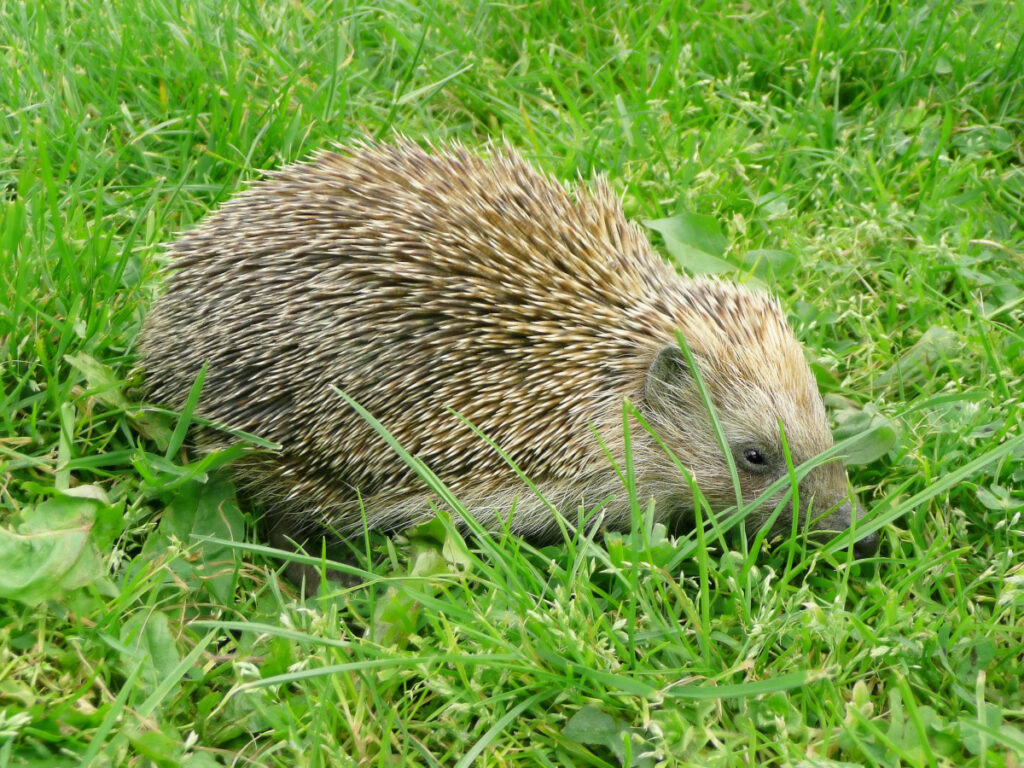If you cannot find the answer you are looking for, please contact us.
Southern white-breasted hedgehog

First described in 1838 by Martin. Like its northern counterpart, it has a striking white chest patch, but it inhabits southeastern Europe and parts of the Middle East. Unlike many temperate hedgehogs, it can cope with drier climates.
Taxonomy
| Kingdom: | Animalia |
| Phylum: | Chordata |
| Class: | Mammalia |
| Order: | Eulipotyphla |
| Family: | Erinaceidae |
| Genus: | Erinaceus |
| Species: | Erinaceus concolor |
Natural range & habitat
The Southern White-breasted Hedgehog occurs across southeastern Europe, parts of the Middle East, and into western Asia. Its range includes countries such as Greece, Turkey, Cyprus, Armenia, Georgia, and parts of Iran, with scattered records from surrounding areas. It inhabits a variety of environments including dry grasslands, open woodlands, scrublands, agricultural land, and suburban gardens. It tends to avoid dense forest and extremely arid desert interiors but thrives in mosaics of open and sheltered areas where foraging grounds and nesting sites are both available. This species often occupies landscapes altered by humans, provided there is sufficient ground cover and invertebrate prey.
Physical traits
The Southern White-breasted Hedgehog is similar in size to the Northern White-breasted Hedgehog (Erinaceus roumanicus), with adults typically measuring 20 to 30 centimeters in length and weighing between 600 and 1,200 grams depending on season and body condition. It is characterized by a prominent white patch on the chest, contrasting with the otherwise darker underbelly fur. The spines are usually banded brown and cream, while the facial fur tends to be lighter than in the European Hedgehog (Erinaceus europaeus). The ears are small and rounded, the legs short and sturdy, and the snout long and mobile. Seasonal changes in body mass are significant, with individuals building up substantial fat reserves before winter hibernation.
Behavior & lifestyle
The Southern White-breasted Hedgehog is nocturnal and solitary, becoming active at dusk and foraging through the night. It shelters during the day in nests made of leaves, grass, and other vegetation, often located under shrubs, in piles of debris, or within burrows. In colder parts of its range, it hibernates during winter, typically from November to March, depending on the local climate. Hibernacula are built to provide insulation against cold temperatures and may be reused across seasons. Home range sizes vary with habitat quality and food availability, and the species may travel several kilometers during nightly foraging. Defensive behavior includes curling into a tight ball, erecting spines, and producing hisses or snorts to deter predators.
Communication
Communication in the Southern White-breasted Hedgehog is primarily through olfactory cues, with scent marking used for territory establishment and reproductive signaling. While acoustic communication is limited, individuals can produce hisses, grunts, and snuffles during encounters with conspecifics or in response to threats. Courtship behavior may include circling and repeated vocal exchanges. Visual communication is minimal, as the species relies largely on smell and hearing in low-light environments. Self-anointing behavior, in which frothy saliva is spread onto the spines after encountering a strong scent, has been recorded, though its exact function remains unclear.
Diet in the wild
The Southern White-breasted Hedgehog is an omnivorous insectivore, feeding primarily on ground-dwelling invertebrates such as beetles, caterpillars, earthworms, slugs, and snails. It may also consume small vertebrates, bird eggs, and carrion when available, as well as a variety of plant materials including berries and fallen fruits. Foraging takes place mostly on the ground, with the hedgehog using its keen sense of smell to locate prey under leaf litter, soil, or low vegetation. Seasonal variation in diet occurs, with greater diversity in summer and autumn when food is abundant. In dry conditions, prey with higher moisture content may be favored to maintain hydration.
Reproduction & life cycle
Breeding in the Southern White-breasted Hedgehog typically occurs from spring through early autumn, with peaks in late spring and early summer. Courtship involves prolonged circling and scent-based interactions, after which the male leaves and the female raises the young alone. Gestation lasts around 30 to 40 days, and litters usually contain four to six hoglets. The young are born blind and with soft, white spines that harden within the first few days. Eyes open at about two weeks, and weaning occurs by four to six weeks. In favorable conditions, some females may produce a second litter within the same breeding season. Sexual maturity is generally reached by the following spring, and the average lifespan in the wild is estimated at three to five years.
Threats & conservation status
The Southern White-breasted Hedgehog is listed as Least Concern by the IUCN due to its wide distribution and adaptability to a variety of habitats. However, localized declines may occur as a result of habitat loss, road mortality, and the use of pesticides, which reduce invertebrate prey and can cause secondary poisoning. Predation by domestic dogs and other carnivores can also impact populations, particularly in suburban and rural areas. Climate change may influence hibernation patterns and prey availability, although the long-term effects on this species have not been studied in detail. Despite these threats, the species remains common in many areas, including regions with moderate human activity.
This species in captivity
The Southern White-breasted Hedgehog is not typically kept as a pet and is often protected by national wildlife laws within its range. It is occasionally housed in wildlife rehabilitation centers for the care of injured or orphaned individuals, with the goal of eventual release into the wild. In captivity, it requires a naturalistic environment with opportunities for foraging, hiding, and seasonal hibernation, as failure to meet these needs can cause stress and health problems. The species does not adapt well to long-term captivity and is best suited for short-term care. There are no coordinated captive breeding programs, and conservation efforts focus on habitat protection, public awareness, and reducing threats in the wild.
